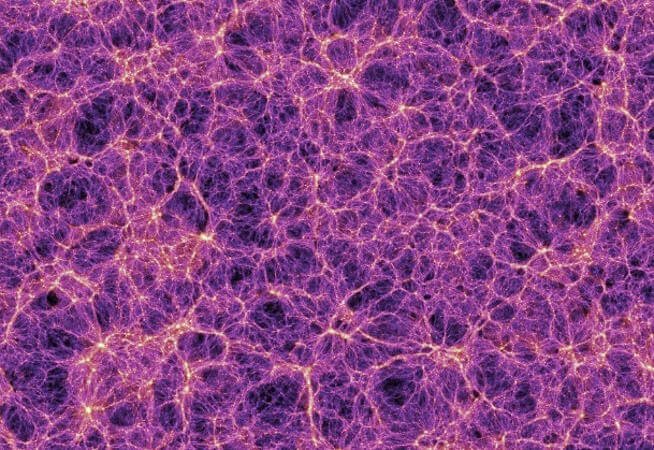Incredibly massive shockwaves the size of entire galaxies have been discovered rattling throughout the cosmic web, according to new research. The first-of-its-kind discovery not only highlights an incredibly awesome cosmic-level phenomenon but may also help astronomers and cosmologists explain the origin and nature of the greater universe.
The cosmic Web Comprises all Known Matter in the Universe
A press release announcing the discovery describes the cosmic web as “an interweaving web of filaments and clusters full of gases and galaxies which wind around cosmic voids millions of lightyears across.”
Composed of all of the known matter in the universe, the cosmic web was first theorized to exist in the 1960s. Some computer modeling took place in the 1980s but has only recently been mapped with any degree of accuracy. Equally significant to the filaments of matter that make up the cosmic web are the thousands of light years long voids between those filaments. Especially since, like the areas of matter, these voids possess magnetic fields.
“Magnetic fields pervade the universe – from planets and stars to the largest spaces in-between galaxies,” explains Dr. Tessa Vernstrom from The University of Western Australia and the lead author of the research detailing the shockwaves permeating the cosmic web. “However, many aspects of cosmic magnetism are not yet fully understood, especially at the scales seen in the cosmic web.”


Hoping to shed some light on how these magnetic fields behave at the cosmic scale, and with an eye on unlocking some of the larger secrets of the universe, Dr. Vernstrom and her team pieced together a cosmic web puzzle from thousands of astronomical observations. Their findings, which were published in the journal Science Advances, could literally and figuratively send shockwaves through the scientific community.
Magnetic Fields And Galactic scale Shockwaves
First, Dr. Vernstrom began her work by recording radio wave emissions coming from the strands of the cosmic web. These observations began in 2020 and constituted the first scientific evidence that matter colliding with other matter was sending shockwaves through the magnetic fields of the cosmic web itself.
“When matter merges in the universe, it produces a shockwave which accelerates particles, amplifying these intergalactic magnetic fields,” said Dr. Vernstrom. “These shockwaves give off radio emissions which should result in the cosmic web ‘glowing’ in the radio spectrum, but it had never really been conclusively detected due to how faint the signals are.”
To make those first verifiable detections, Vernstrom collected from data 612,025 galaxy cluster pairs and “all-sky” maps from the Global Magneto-Ionic Medium Survey, the Planck Legacy Archive, the Owens Valley Long Wavelength Array, and the Murchison Widefield Array. TNext, Vernstrom and her team stacked that data over a map of the known clusters and filaments of the cosmic web to look for correlations. According to the press release, the stacking method “helps to strengthen the faint signal above the image noise.”
The resulting signal was compared to state-of-the-art cosmological simulations generated through an effort known as the Enzo Project, which among other astronomical tasks, collects and improves such cosmic models. And sure enough, this stacked comparison confirmed that the collision of matter on a massive scale was indeed producing galactic-scale shockwaves. Furthermore, those shockwaves were rippling throughout the entire cosmic web.
“We present the first observational evidence that Fermi-type acceleration from strong shocks surrounding the filaments of the cosmic web,” explains the abstract of the team’s published research, “as well as in peripherals of low-mass clusters, is at work in the Universe.
Cosmic Web Discovery Could Help Solve Mysteries of the Universe
The research study notes that further observations will be required to bolster the original data. But the first tantalizing signs of galactic scale shockwaves affecting the magnetic fields throughout and in between the cosmic web could be key to helping cosmologists and astronomers unravel a number of mysteries of the universe.
“Our understanding of these magnetic fields could be used to expand and refine our theories on how the universe grows,” the researchers explain, “and has the potential to help us solve the mystery of the origins of cosmic magnetism.”
“As very few sources emit polarised radio light, our search was less prone to contamination, and we have been able to provide much stronger evidence that we are seeing emissions from the shock waves in the largest structures in the universe,” said Vernstrom, “which helps to confirm our models for the growth of this large-scale structure.”
Christopher Plain is a novelist, comedian, and Head Science Writer at The Debrief. Follow and connect with him on Twitter, learn about his books at plainfiction.com, or email him directly at christopher@thedebrief.org.

